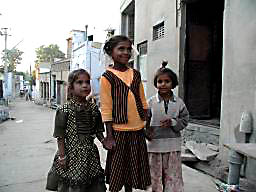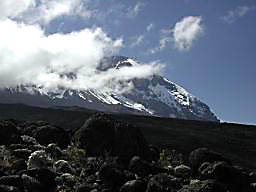|
t r a v e l s n a p zT r a v e l t h e w o r l d f o r j u s t a f e w c l i c k s |
||||
Guestbook |
Readers Comments about Travelling with a Digital Camera |
|||
Article Links:Site Links:Technique Links:
Visit Ming's website and see more of his photos at www.adventurageous.com |
Ming writes . . . . . "Let me add my experience backpacking with my digital camera for over a year.I found the following advantages to
traveling with a digital camera. Ming's tips . . . How to choose a camera?Chose a reputable brand with the highest resolution that you need or can afford. This point is mentioned regularly so I will not elaborate.. But I want to mention that many of the camera manufacturers try to get you for accessory costs by making their equipment proprietory. Sony is guilty of this in my opinion. The memory cards are proprietory, the batteries are also and they are both super expensive. So to minimize future cost, make sure you choose a camera that takes standard AA batteries and common media cards like SmartMedia, Compact Flash etc. I have two sets of rechargeable batteries that I have been using for like 2 years at only $10 per set. If I add up the times that I would had to buy replacement batteries, it would be in the hundreds of dollars. The rechargeables are great. One set in camera and one spare that have just been recharged could last a week with intensive picture taking. They recharge in about 4 hours. Olympus is known to have high quality cameras with accessories from other manufacturers available. For the Day tripperNo accessories to worrry about. Just carry your camera, and a spare set of battery and maybe memory card. And download everything once you get home to your computer. This is the simplest scenerio, you do not have to worry about buying or carrying any additional equipment. For the Hotel/luggage travelerYou may have a laptop already...and since you are probably staying at one
hotel location during your trip then it is probably worthwhile to bring
your laptop for storage and to view your photos right away. A cd burner
on the laptop can be nice to backup copies and also sometimes to make
copies for people that you meet along the trip. For the Adventurer/BackpackerOn my trip around the world for a year, I carried, besides my camera, a
spare memory card, spare set of rechargeable batteries, voltage
converter, battery charger and DIGITAL WALLET with 3GB. The digital
wallet functions as a memory card reader that downloads to an onboard
harddrive. So when your memory card is full, just plug it into
the "Wallet" (size of 2 packs of cigarettes) and the files are on the
portable harddrive. Thanks, Ming, for sharing your thoughts. |
Add your experiences . . . Visit our Guestbook or send an email to richard@travelsnapz.com |
Question:I'm traveling overseas with my digital camera and I won't be able to take my laptop. I'll definitely want to take a lot of photos but will be limited by my compact flash cards. Are there other storage options? I have a mac, if that helps. Answer:You have a Mac and you need more storage space without a laptop. An answer is to buy an iPod and a card reader sold by Apple that will allow you to transfer pix to the iPod. Total cost would be between $USD400-$USD600 depending on what size iPod you get. That may seem expensive but when you can buy a 512MBCF for around $100 and get the iPod setups for 4 or 6 times that and have 10GB to 40GB of space, it is well worth it...plus you can listen to music too! |
Home |
Back to Part 1 |
Back to Tips |
More Tips |
 especially in developing
countries where people are shocked that they can see themselves on TV
(or the display of the camera). Often you become the center of attention and
crowds gather around to see their pictures. I see this as sharing the
joy with the local people and an opportunity to interact with them and make
them happy. Otherwise, we typically just take a picture of them and
leave, which must be like robbery in their minds.
especially in developing
countries where people are shocked that they can see themselves on TV
(or the display of the camera). Often you become the center of attention and
crowds gather around to see their pictures. I see this as sharing the
joy with the local people and an opportunity to interact with them and make
them happy. Otherwise, we typically just take a picture of them and
leave, which must be like robbery in their minds. and Base of K2
mountain (although my camera omitted a few shots due to altitude or
cold, I never did figure it out). The wallet cost about $200 and allows
you to be away from the civilization of computers and power for weeks
without worrying about memory or power for your camera. This was
important as I was going on week long safaris and 3 week hikes into the
Himilayas.
and Base of K2
mountain (although my camera omitted a few shots due to altitude or
cold, I never did figure it out). The wallet cost about $200 and allows
you to be away from the civilization of computers and power for weeks
without worrying about memory or power for your camera. This was
important as I was going on week long safaris and 3 week hikes into the
Himilayas.